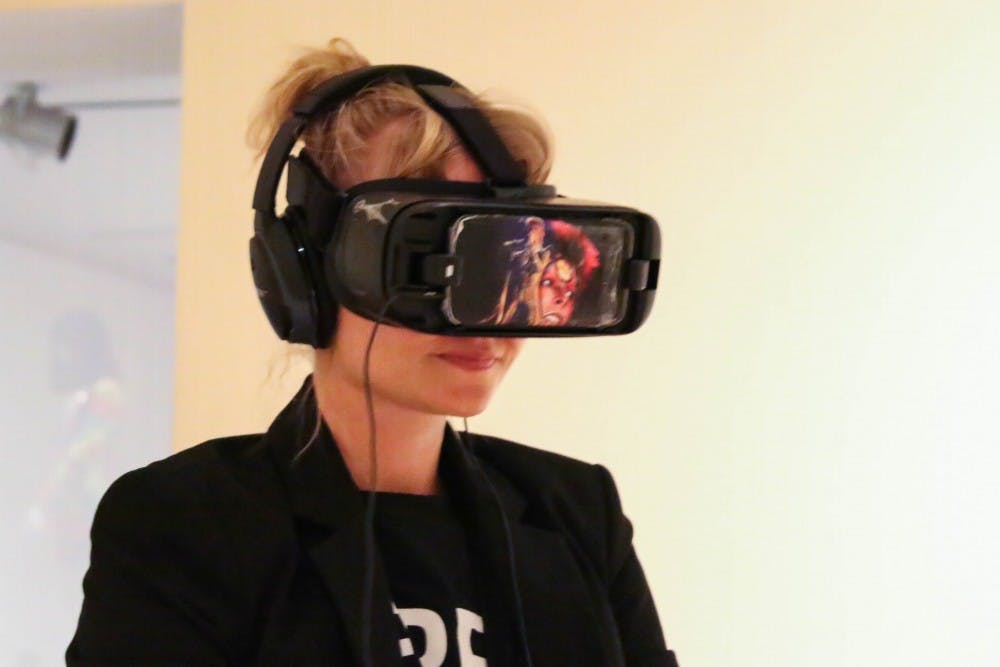Virtual reality could be a dream come true, or a nightmare in the flesh. It could be anything that it is programmed to be with no real limitations.
ASU, with its everlasting call to innovation, has started to utilize VR goggles for an online biology lab.
ASU has partnered with Google and Labster, a virtual lab simulation company specifically dedicated toward education STEM subject matters, to give students in an online Biology 181 class the ability to view traditional lab situations.
The students can purchase their own VR headsets or borrow a pair from the school. There are currently 30 students in the course, and there's potential for expansion.
Amy Pate, the manger of instructional design for the School of Life Sciences, said that beta testing has been occurring over the last year for this online biology course, and if all goes as planned, there will be a total of three online lab courses using VR goggles starting in the spring 2019 semester.
“Cell biology, animal physiology and ecology will be the three courses offered with virtual reality labs,” Pate said.
She said these three partners have developed an online lab course that is custom to the ASU lab objective to have the students engage in critical thinking, problem solving and analyzing data, among other things.
Along with simulating lab activities, VR can also bring ASU students to places around the world.
They can virtually travel to places like Antartica to examine wildlife like whales and seals, along with experiencing situations similar to field training like being on a true expedition.
Students will even have the chance to explore outside Earth's atmosphere through VR.
“I’m most excited for the ecology course, because the students will be experiencing going out to another planet and looking at what is happening in the (International) Space Station that is causing the crops to die," Pate said.
Pate said that the use of VR truly follows the ASU charter as it allows for greater access to all students from all over the world, at any time and for no additional cost.
“The virtual reality goggles are being used for the online classes that are geared towards students who are unable make it to campus because they’re deployed in the military, or they’re international students who can’t come into the U.S. for some reason," Pate said. "This allows them to have that lab experience without coming to campus, which meets the mission of inclusion.”
Philippos Savvides, the manager of online learning technology for EdPlus at ASU, believes that using VR will take off tremendously in the world of online education.
“As the technology becomes more ubiquitous, it will become more common,” Savvides said. “We will start using them with more and more subject matters in the university.”
Alireza Bahremand, a graduate student studying software engineering, agreed that the technology will become more common as it advances.
Read More: What it's like preparing to give a TEDxASU talk
One of the biggest limitations in VR at the moment is the lack of other sensations such as touch. But there are currently many different areas of research that are developing technology such as sensory gloves to bring that extra touch of life into the VR experience.
Bahremand helped contribute to a hydro fluids research conducted by Shahabedin Sagheb.
“Students working with hazardous liquids in labs can hold these empty containers, but with little motors and weights inside of them, (so the weights) ... can move around,” Bahremand said. “Paired with the VR goggles as the fluid mechanics simulate it makes the center of mass move the coordinates ... so it feels like they’re actually holding the liquid and experimenting with it.”
Pate said that this technology offers unprecedented benefits from accessibility both physically and financially, to safety and that most importantly, VR encourages curiosity in the classroom through allowing failure.
“Virtual reality offers students the ability to fail with hitting the re-do button to try again with no real life consequences,” she said.
Reach the reporter at Addie.Fairley@asu.edu or follow @AddieFairley on Twitter.
Like The State Press on Facebook and follow @statepress on Twitter.




